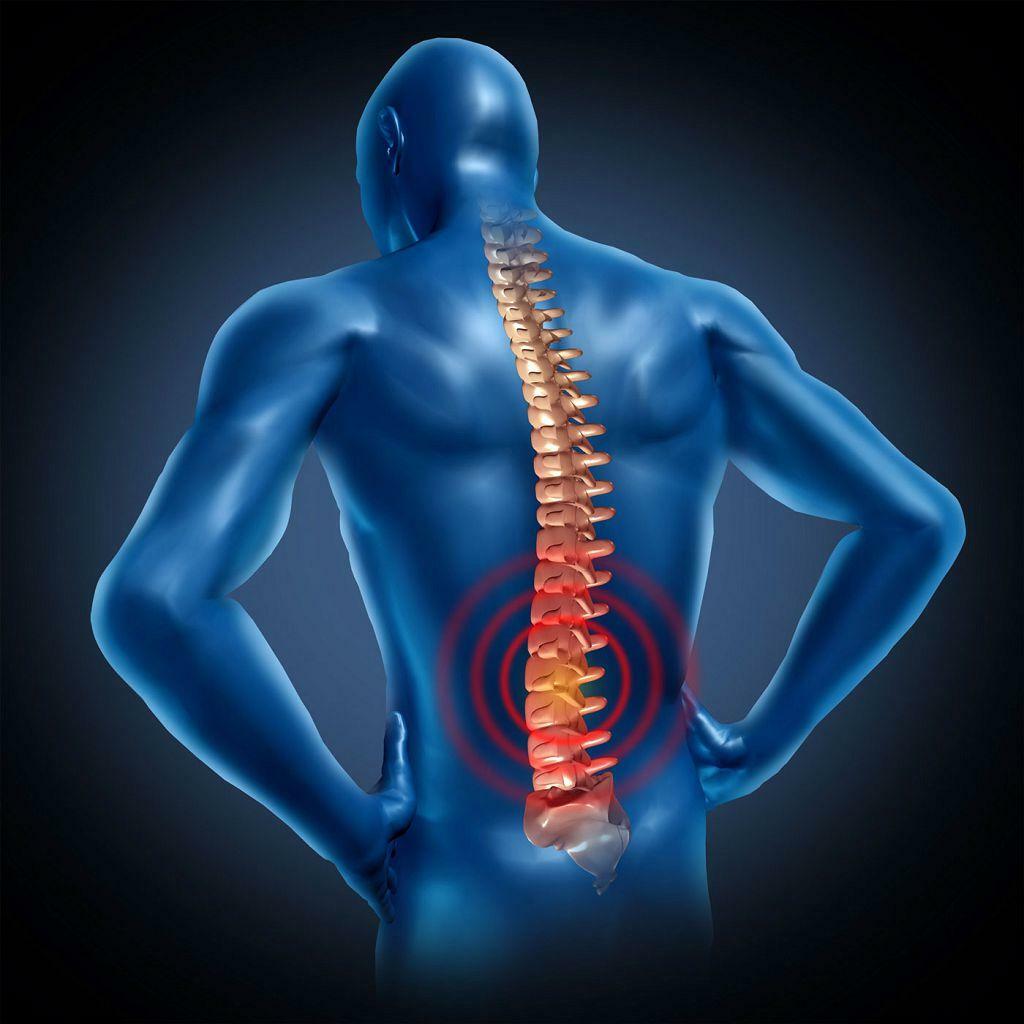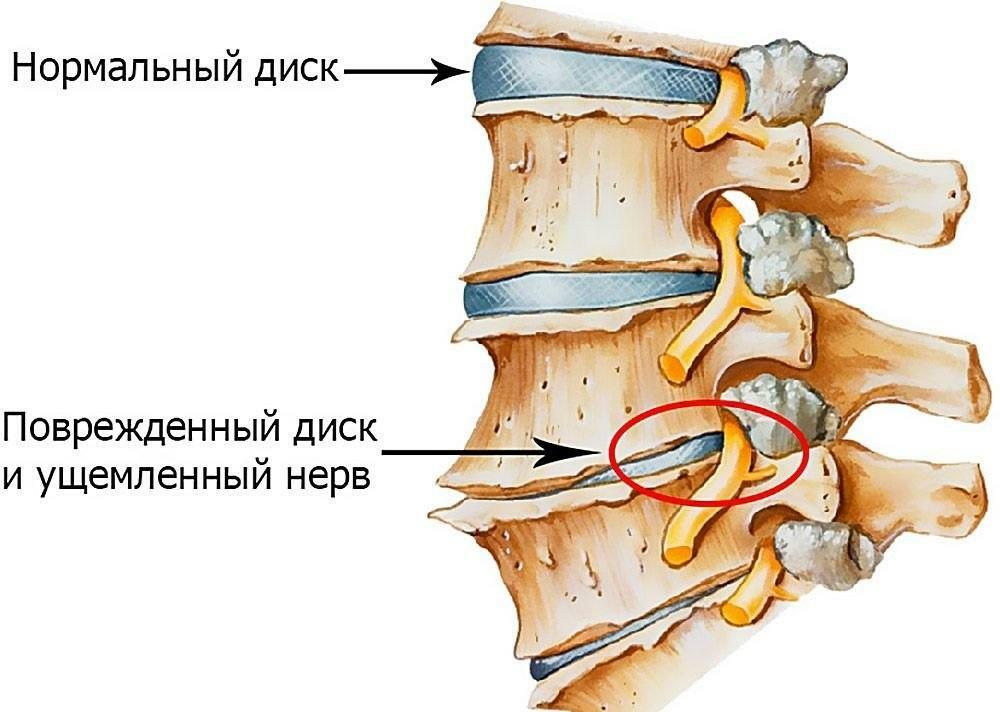Scoliosis is a common disease of the spine, which is represented in a variety of species depending on the curvature. S-shaped scoliosis is a deformation in which the spine is bent along the entire length in two places, as a result of which the spin takes the form of the letter "S".The disease is difficult to treat due to the fact that deformities affect two scoliotic arches. Do not be afraid of terrible names - in the process of reading the article you will understand everything.

C-shaped scoliosis
Content of material
- 0.1 Arcs
- 1 Degrees
- 1.1 1st degree
- 1.2 2nd degree
- 1.3 3rd degree
- 1.4 4th degree
- 2 Treatment
- 2.1 Physical education for S-shaped scoliosis
- 2.2 Video - Exercises for S-shaped scoliosis
Arcs
S-shaped scoliosis most often develops in two parts of the spine: the upper lumbar or in the thoracic. They should be discussed in more detail.
| Arcs | Description |
|---|---|
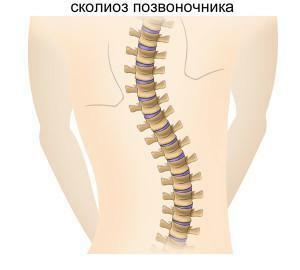 First primary arc | Localized in the thoracic region. In most cases, the apex of this arc occurs on the seventh or eighth thoracic vertebra. It is logical to assume that the prognosis of the disease depends on the height of the arch: the higher the arc, the more negative the prognosis will be. This is due to the rate of progression of the disease, which is fraught with the formation of extremely severe forms of curvature, which are not amenable to drug treatment. |
 Second primary arc | The second arc is formed much later than the first one. The highest part of this arc is at the level of the first or second lumbar vertebra. This area is characterized by the fact that the progression of the disease occurs rather slowly and, as a result, sometimes has no obvious signs. In some cases, the absence of external manifestations leads to the fact that the problem is detected only on the x-ray. At the same time, the patient's condition worsens, as the symptoms of scoliosis in the thoracic region become more serious and heavier. |
The primary arc inevitably leads to secondary development, which causes a significant change in the spinal line. In particularly difficult cases, the spine can twist around its axis as a reaction to the displacement of the center of gravity.

S-shaped scoliosis - photo
Degrees
The degree of S-shaped scoliosis depends on how much the arc is curved. All four degrees are distinguished, each of which has its own peculiarities.

S-shaped Scoliosis Scheme
1st degree
The first degree is the easiest form of the disease, since in this case the angle of curvature is not more than ten degrees. At this stage, the disease is almost invisible to the patient, and so many take it for stoop. However, not all so simple. The first degree of S-shaped scoliosis is characterized by the presence of only one primary arch, and the second is formed much later. This stage of the ailment is most favorable for treatment, but the absence of characteristic signs of a serious problem leads to the fact that a person simply ignores the disease. As a result - scoliosis continues not only unhindered, but also rapidly develop.
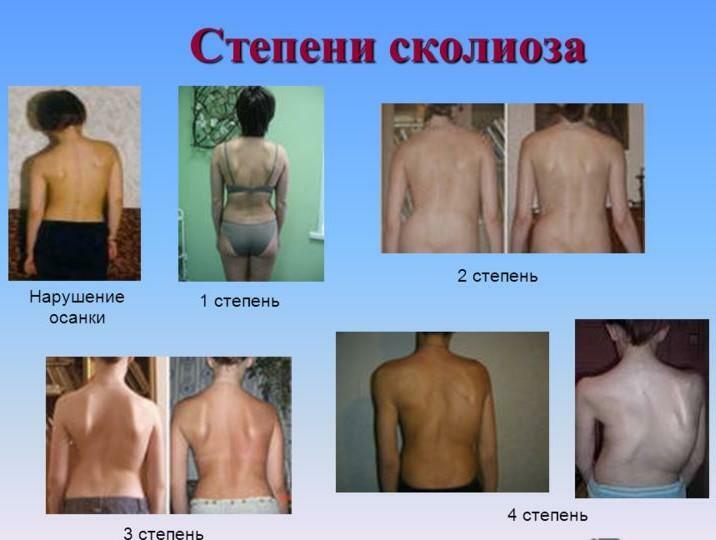
In medicine, there are several varieties of scoliosis, depending on the shape of the curvature
2nd degree
The 2nd degree of S-shaped scoliosis presents many more problems than the first. The angle of deformation of the spinal column increases to 25 degrees. In addition to stoop, the patient also has other unpleasant signs of the disease: asymmetry of shoulder blades and shoulder-blades, which becomes noticeable to the naked eye, especially if the person leans forward. The second arc is already beginning to form, but its development is still at the very beginning, and therefore still not noticeable.

II degree - angle of curvature from 11 to 30 degrees
3rd degree
Third degree of scoliosis
To the third degree, the angle of the arc is 25 to 50 degrees. By this time, the second arc has already reached its "heyday", and therefore is actively manifested on the body - up to 25 degrees. Externally, the changes become very noticeable: in addition to the obvious asymmetry of the chest, a rib humps develops in man. These forms of deformation already belong to the category of heavy ones, since with the passage of time they begin to negatively affect the normal vital activity of a person. How? The development of curvature affects the functioning of the body, mainly on the cardiovascular system.
4th degree
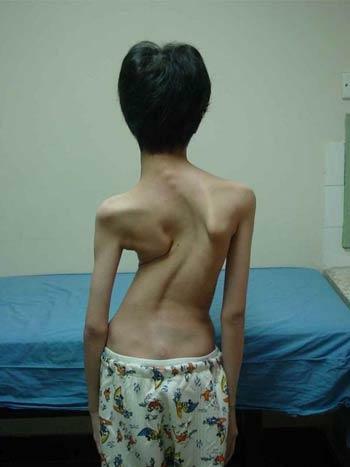
Scoliosis of the 4th degree
By this time the angle of deformation reaches 50 degrees. As for the second arc, there are two possible variants: it either "brakes" at the same level as it was, or continues to develop, which is undesirable for the patient. In the case of severe pathological processes, the scoliosis of the lower part becomes serious and irreversible.
This leads to a strong deformation of the human body, which literally disfigures the patient. The most terrible consequences are disability. Unfortunately, such an outcome at the 4th degree of s-shaped scoliosis is more than probable. To all can develop severe forms of pulmonary and cardiac failure, and other organs also lose their functionality.
For ease of perception, we combine all signs of different degrees of scoliosis in one table
| 1 degree | 2 degree | ||
|---|---|---|---|
| 3 degree | 4 degree | ||
| Saddle | Vertebrae rotate vertically around their axis | Vertebral rotation visible for surrounding | Strong deformation |
| Rotation of vertebrae | Absence of neck and waist symmetry | Development of costal hump | Muscle stretching |
| No previous symmetry of waist | Pelvage | Weak muscles of abdomen | The angle of curvature is more than 50 degrees |
| The shoulders tend to come together | The protrusion in the thoracic part | The fall of the rib and muscle | |
| The left shoulder is located above the right or vice versa | The appearance of the muscle cushion in the lumbar part | The bulging of the ribs | |
| The head is downward | The deformation is visible in any posturethe patient | The appearance of contractures |
4 degree of scoliosis is the most severe and serious. When specialists diagnose this particular stage of a disease in a patient, their first priority is to stop the progression of pathology. In this situation, among other things, it is very important to alleviate the condition of the patient, since a person will constantly experience severe pain. Thus, we smoothly turn to the features of treatment of S-shaped scoliosis.
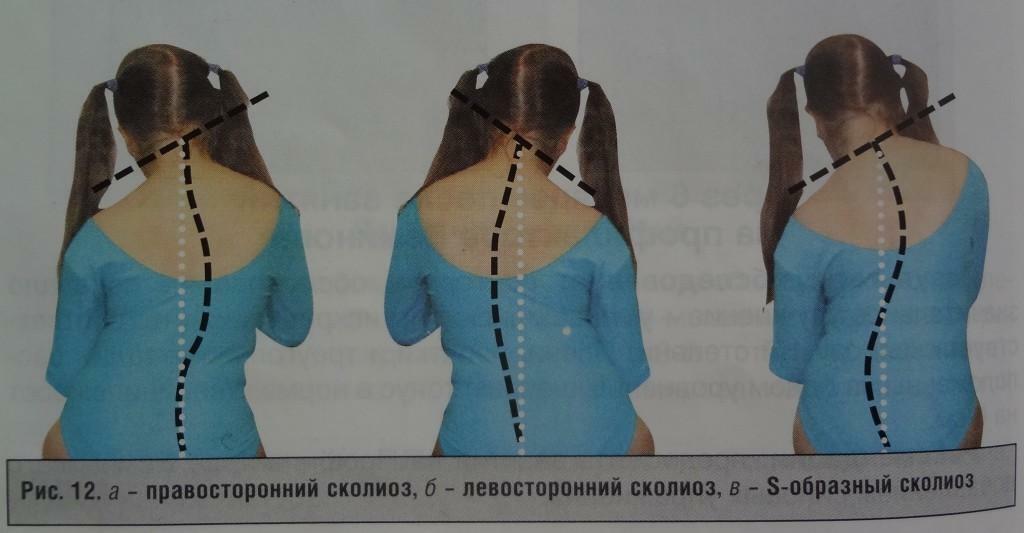
Scoliosis
Treatment
Before resorting to extreme measures, professionals resort to conservative therapy, which demonstrates high results in the early stages of the disease, when the deformation has not yet become critical. Most often conservative degree is used at the first degree of ailment, less often - at the second degree. As for the third and fourth stages, only surgical intervention will help to cope with the disease.
Now let's try to figure out what is conservative therapy. It is based on exercise therapy, that is, therapeutic physical exercises, which are always developed on an individual basis. This is very important, because each case of scoliosis is unique and requires a special approach.

Treatment of scoliosis
First of all, after diagnosis and diagnosis, the patient is prescribed an orthopedic corset, which for a long time should be a permanent companion of a person.
Among other effective methods of treatment, experts recommend:
- manual therapy;
- reflexotherapy;
- swimming.

Manual therapy in the treatment of scoliosis
In the event that a person experiences severe pain, he is prescribed painkillers.

Medications for scoliosis. Analgesics
With regard to operational techniques, there are now a great many, and only a doctor can make a qualified choice of a suitable complex. The essence of this type of treatment is the fixation of the vertebrae. For this purpose, special metal staples are used. This is not only a painful, but also a long process, after which the patient needs a long recovery period.
Physical training for S-shaped scoliosis
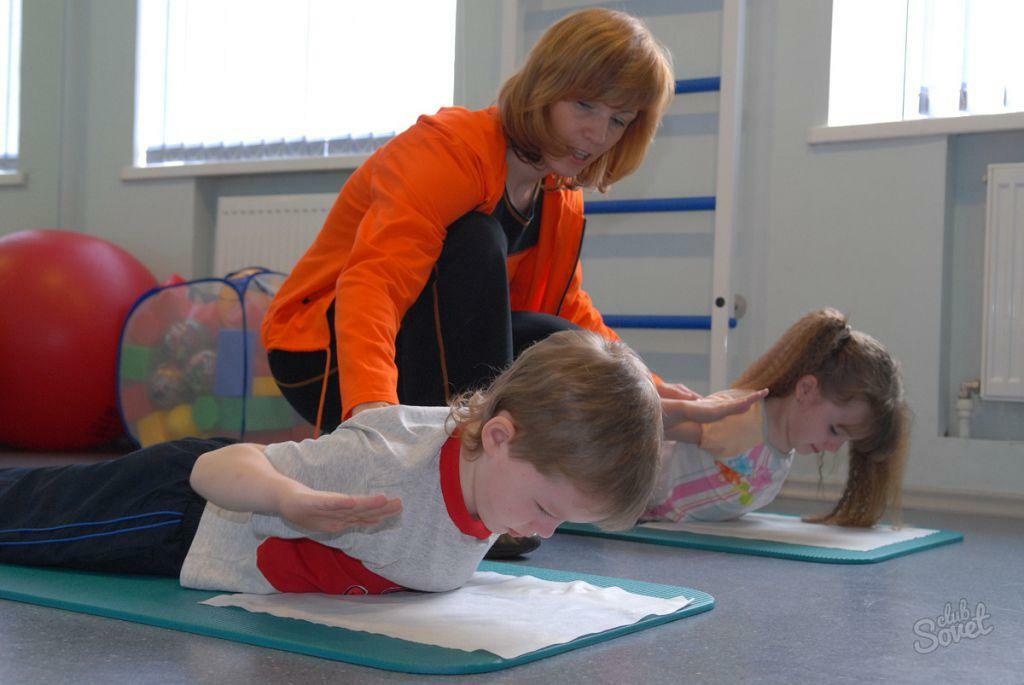
Exercising gymnastics for scoliosis
In order to stop or at least slow down the disease in the first stages of the disease, you need to take note of a few simple exercises.
Exercise 1.
- We lay down on the stomach.
- Straighten arms, legs.
- Bend the right hand.
- The left arm and the right leg are raised above the floor.
- Hold the limbs in this position for a few seconds.
- We change the arm and leg.
- Repeat the exercise.

Raise the left arm and right foot
Exercise 2.
- We lay down on the stomach.
- We lift arms and legs above the floor.
- Hold the limbs for a few minutes.
- Repeat 5 times.
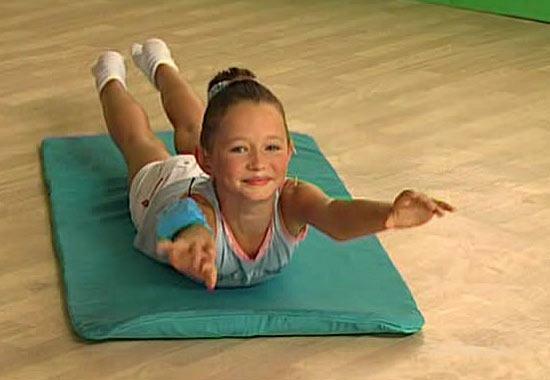
Hands and Feet Raise Above the Floor
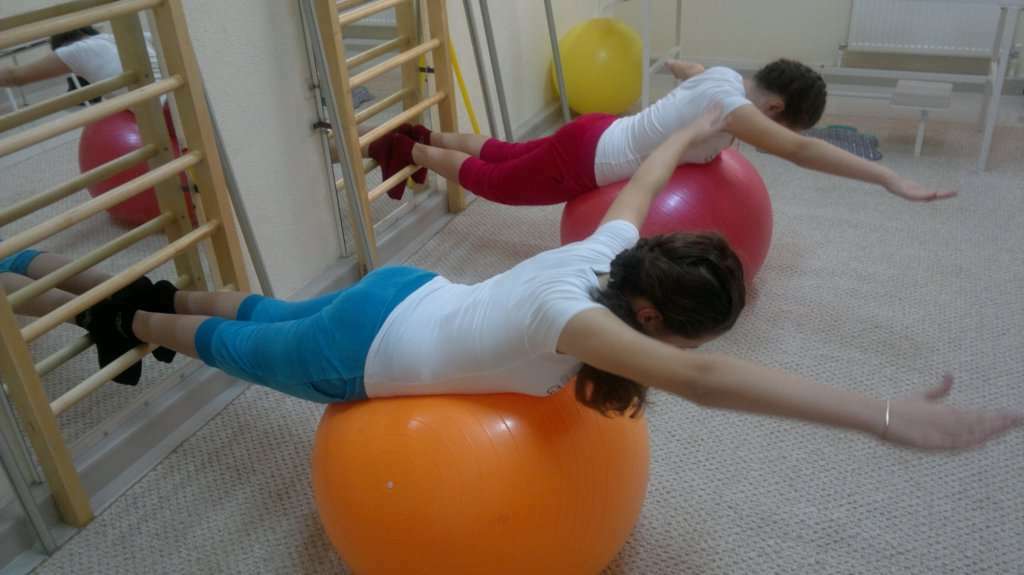
Exercise Option on the Fitball
Exercise 3.
This exercise is familiar to everyone from school, because everyone in the gym was forced to pull up on the crossbar. The principle is the same, but in our situation, pulling should be done slowly and carefully. In the event that you are not doing very well, you need to lower the height of the bar or come up with a stand. In total you need to do about 8 pull-ups. Do not be sober.

Tightening
Take care of yourself!


